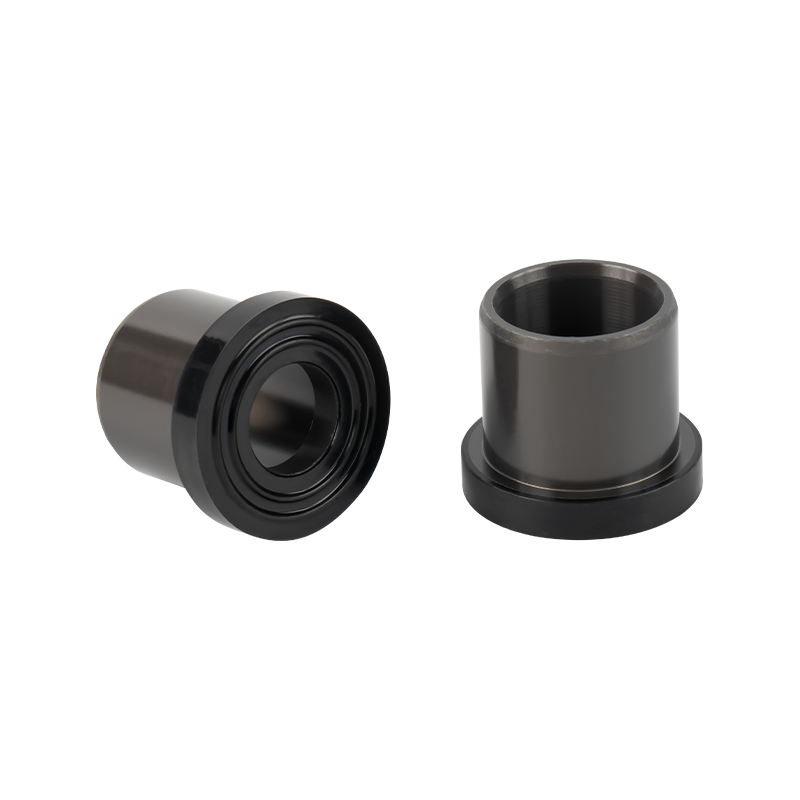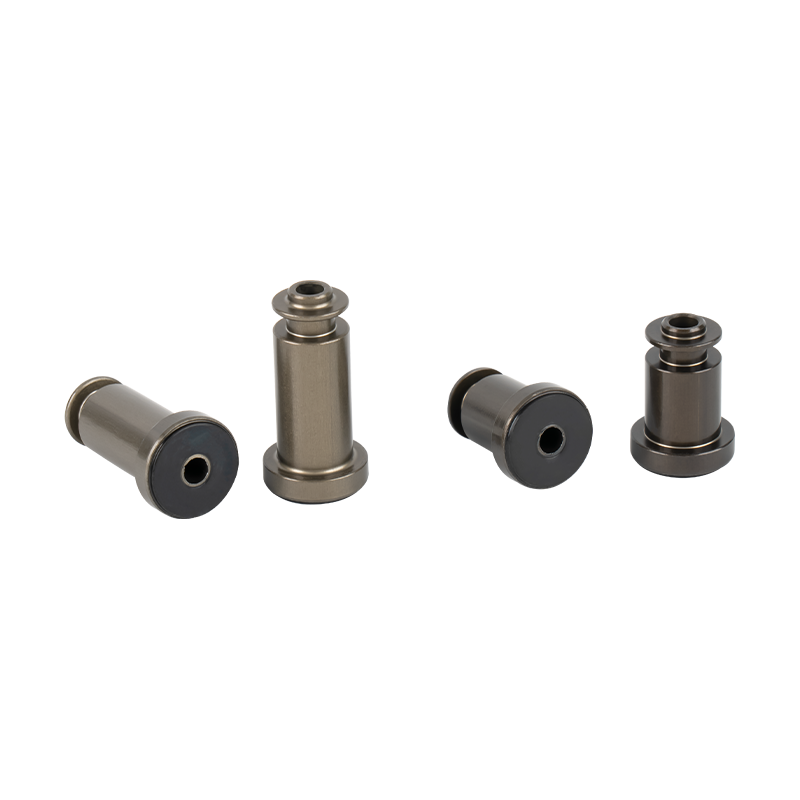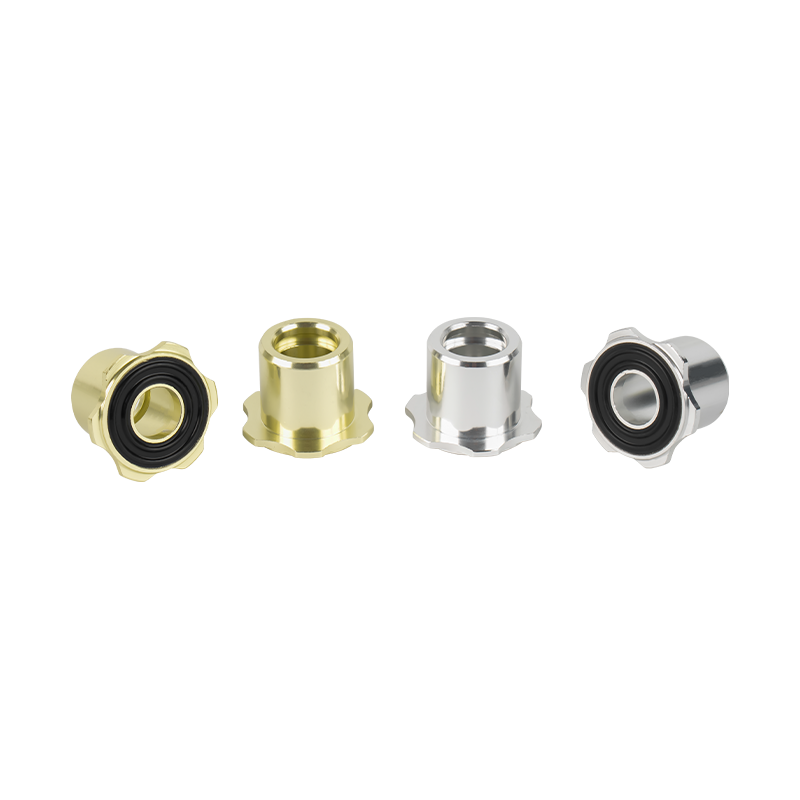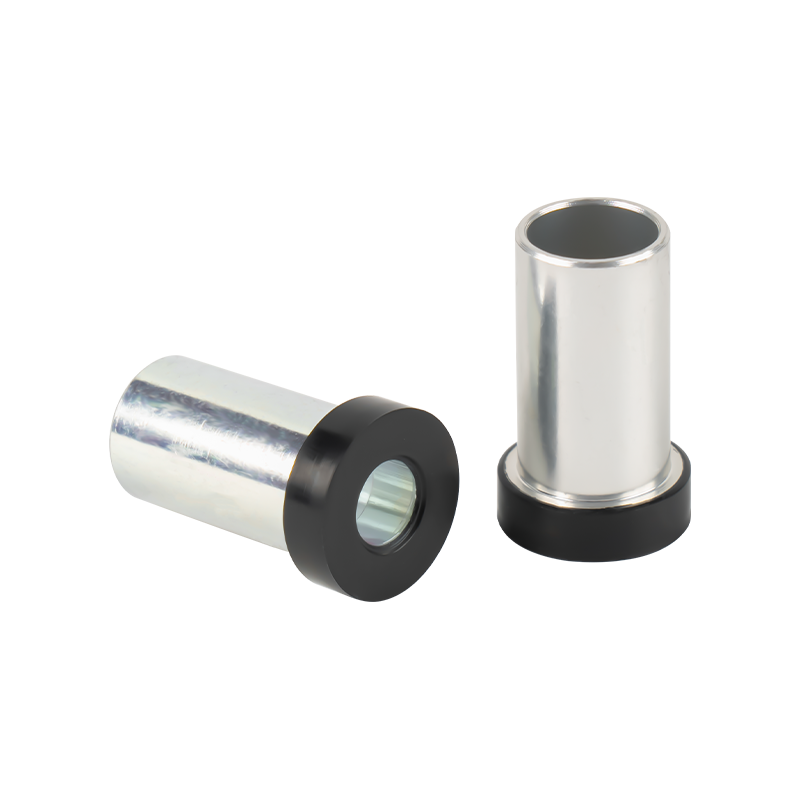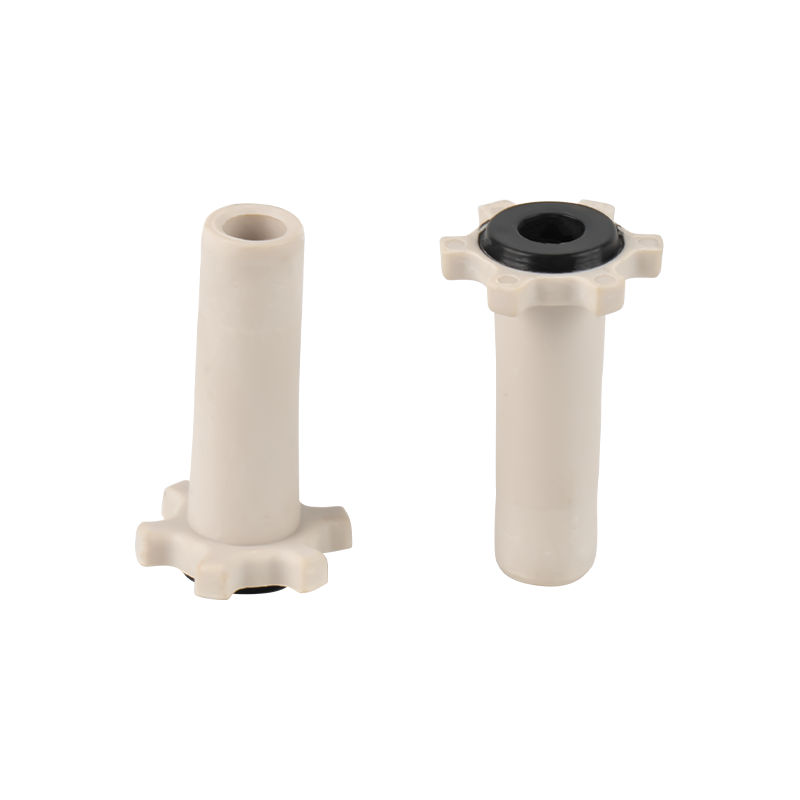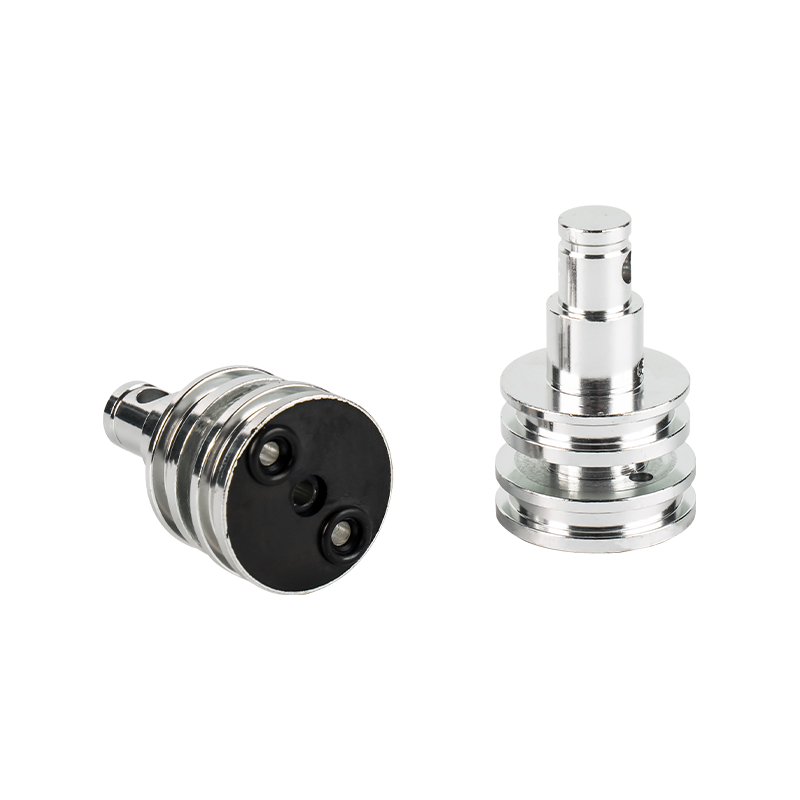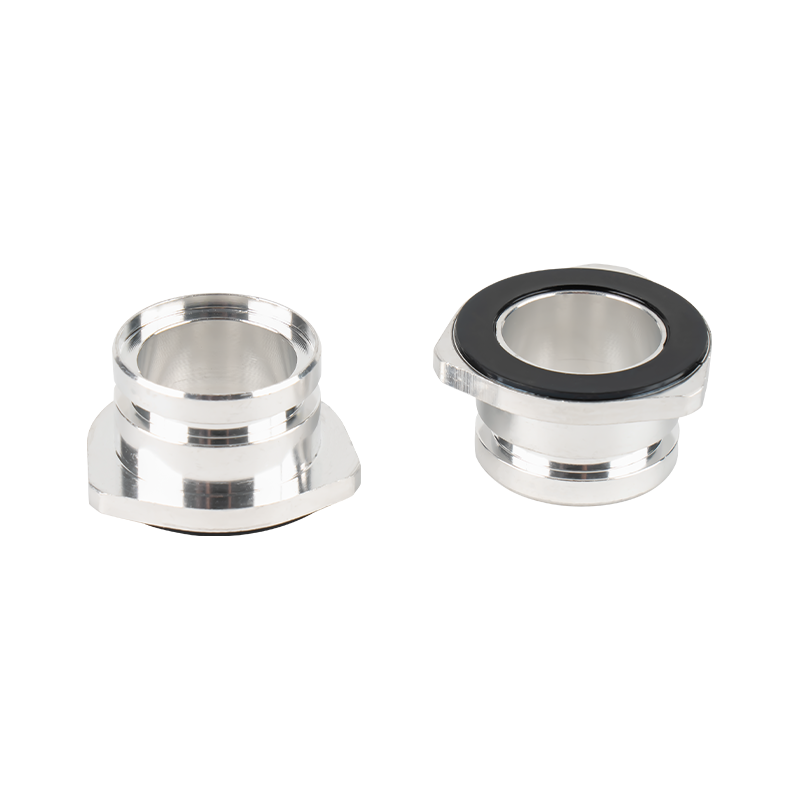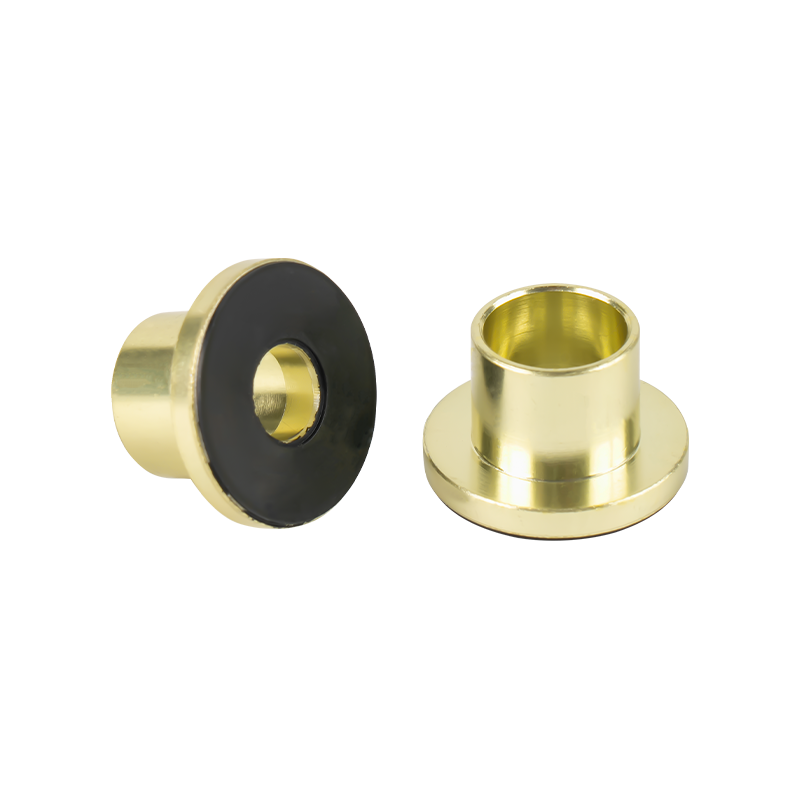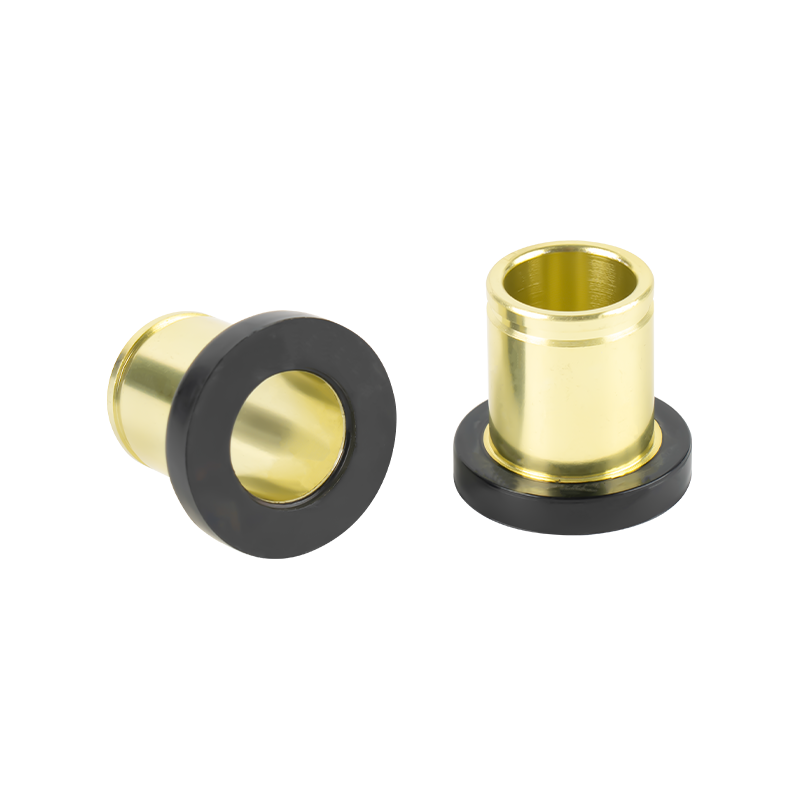Why Are Lightweight Aluminum Alloy Machined Parts Ideal for Aerospace and Automotive?
2025-10-24
Content
- 1 What Core Properties of Aluminum Alloys Make Them Suitable for Aerospace and Automotive Demands?
- 2 How Do Aluminum Alloy Machined Parts Meet Aerospace Industry-Specific Requirements?
- 3 What Advantages Do Aluminum Alloy Machined Parts Offer the Automotive Industry?
- 4 How Do Aluminum Alloys Compare to Alternatives (Steel, Titanium, Composites) in These Industries?
- 5 What Machining Techniques Optimize Aluminum Alloy Parts for Aerospace and Automotive?
What Core Properties of Aluminum Alloys Make Them Suitable for Aerospace and Automotive Demands?
Aerospace and automotive industries share a non-negotiable requirement: balancing weight reduction with structural performance. Aluminum alloys—particularly 6061, 7075, and 2024 grades—excel in this balance, thanks to four core properties that align with the sectors’ most critical needs:
- Exceptional Strength-to-Weight Ratio: Aluminum’s density (2.7 g/cm³) is roughly 1/3 that of steel (7.8 g/cm³) and 1/5 that of titanium (4.5 g/cm³), yet its mechanical strength (when alloyed and heat-treated) rivals many steels. For example, 7075-T6 aluminum (a common aerospace grade) has a tensile strength of 572 MPa—comparable to low-carbon steel (400–550 MPa)—but at a fraction of the weight. This translates to direct fuel savings: in aviation, every 1% weight reduction cuts fuel consumption by ~0.7%; in automotive, a 100 kg weight reduction improves fuel efficiency by ~0.3–0.5 L/100 km.
- Superior Corrosion Resistance: Unlike steel (which rusts rapidly without coating), aluminum naturally forms a thin, stable oxide layer (Al₂O₃) on its surface—this layer acts as a barrier against moisture, chemicals, and environmental exposure. For aerospace, this means parts like wing spars or fuselage components resist corrosion from high-altitude humidity and de-icing fluids; for automotive, it eliminates the need for heavy anti-rust coatings on parts like engine blocks or chassis components, further reducing weight.
- Excellent Machinability: Aluminum alloys are soft and ductile compared to steel or titanium, making them easy to machine into complex, precision parts. They require less cutting force, generate less heat during machining, and produce smooth surface finishes (Ra < 1.6 μm) with minimal tool wear. For aerospace, this enables the production of intricate parts like turbine blades or avionics housings (with tolerances as tight as ±0.005 mm); for automotive, it speeds up the manufacturing of high-volume parts like transmission casings or suspension components, lowering production costs.
- High Thermal and Electrical Conductivity: Aluminum’s thermal conductivity (237 W/m·K) is 3x that of steel and 2x that of titanium—critical for parts that need to dissipate heat. In aerospace, this makes aluminum ideal for heat exchangers or electronic cooling systems (e.g., in satellites); in automotive, it’s used for engine cylinder heads or battery cooling plates (for electric vehicles, where thermal management prevents battery degradation). Its electrical conductivity also makes it suitable for wiring harnesses or sensor components in both industries.
These properties address the most pressing challenges of aerospace (fuel efficiency, payload capacity, reliability) and automotive (emissions reduction, performance, affordability)—making aluminum alloys a natural choice for machined parts.
How Do Aluminum Alloy Machined Parts Meet Aerospace Industry-Specific Requirements?
The aerospace industry imposes extreme demands on materials: parts must withstand high stress (from takeoff/landing), temperature fluctuations (-55°C to 120°C at altitude), and long service lives (20–30 years for commercial aircraft). Aluminum alloy machined parts meet these demands through tailored performance and design flexibility:
1. Weight Reduction for Fuel Efficiency and Payload Capacity
Aerospace’s top priority is weight minimization—every kilogram saved allows more passengers, cargo, or fuel to be carried. Aluminum alloys deliver on this:
- Commercial aircraft like the Boeing 787 use ~15% aluminum (by weight) in machined parts like wing ribs, landing gear components, and fuselage frames. These parts replace heavier steel or titanium alternatives, cutting the aircraft’s total weight by ~10% and reducing fuel consumption by ~15% compared to older models.
- For military aircraft (e.g., fighter jets), aluminum machined parts like engine mounts or control surfaces reduce weight without sacrificing strength—critical for achieving high speed and maneuverability.
2. Structural Integrity Under Extreme Conditions
Aerospace parts must maintain strength and shape under cyclic stress (e.g., repeated takeoffs/landings) and temperature extremes. Heat-treated aluminum alloys excel here:
- 2024-T3 aluminum (used in aircraft wings) has high fatigue strength (145 MPa for 10⁷ cycles), meaning it resists cracking from repeated stress. Machined parts made from this alloy are precision-milled to uniform thickness, ensuring stress is distributed evenly across the component.
- 7075-T6 aluminum (used in landing gear brackets) retains 90% of its strength at temperatures up to 120°C—critical for parts exposed to friction heat during landing. Its machinability also allows for the creation of complex geometries (e.g., hollowed-out sections) that reduce weight while maintaining structural rigidity.
3. Compatibility with Aerospace Manufacturing Standards
Aerospace requires parts to meet strict quality standards (e.g., AS9100 for manufacturing, AMS specifications for materials). Aluminum alloys align with these standards:
- Machined aluminum parts can be certified to tight dimensional tolerances (±0.001 mm for avionics components) using CNC machining—essential for ensuring parts fit seamlessly with other aircraft systems (e.g., a sensor housing must align perfectly with wiring connectors).
- Aluminum’s weldability and joinability (via rivets or adhesives) allow for the assembly of large structures (e.g., fuselage panels) with minimal weight gain. Machined aluminum parts have smooth, consistent surfaces that ensure strong, reliable joints—critical for preventing leaks or structural failures.
What Advantages Do Aluminum Alloy Machined Parts Offer the Automotive Industry?
The automotive industry’s priorities—reducing emissions, improving performance, and lowering production costs—are directly addressed by aluminum alloy machined parts. Their unique benefits make them a preferred choice for both internal combustion engine (ICE) and electric vehicle (EV) manufacturers:
1. Emissions Reduction and Fuel Efficiency (ICE Vehicles)
Global emissions regulations (e.g., EU’s Euro 7, U.S. EPA standards) require automakers to cut fuel consumption and CO₂ output. Aluminum’s light weight drives this:
- A typical ICE vehicle uses ~150 kg of aluminum machined parts (engine blocks, cylinder heads, suspension arms). Replacing steel engine blocks with aluminum versions reduces engine weight by ~30 kg, improving fuel efficiency by ~1–2 L/100 km and cutting CO₂ emissions by ~20–30 g/km.
- Machined aluminum suspension components (e.g., control arms) reduce unsprung weight (weight not supported by the vehicle’s springs), improving handling and further boosting fuel efficiency by reducing rolling resistance.
2. EV-Specific Benefits: Battery Weight Offset and Thermal Management
EVs face a unique challenge: heavy lithium-ion batteries (500–1,000 kg) increase overall vehicle weight, reducing range. Aluminum machined parts offset this weight while addressing EV-specific needs:
- Aluminum battery enclosures (machined from 6061-T6) are 50% lighter than steel enclosures, cutting vehicle weight by ~50–100 kg and extending EV range by ~5–10%. The enclosures’ machined precision ensures a tight seal, protecting batteries from moisture and impact.
- Aluminum cooling plates (machined with micro-channels) efficiently dissipate heat from EV batteries—critical for preventing overheating and extending battery life. Aluminum’s thermal conductivity allows heat to be transferred 2x faster than steel, ensuring batteries stay within their optimal temperature range (25–40°C).
3. Cost-Effectiveness for High-Volume Production
Automakers need materials that are both high-performance and affordable for mass production. Aluminum alloys deliver on this:
- Aluminum’s machinability reduces production time: a CNC machine can produce 2–3 aluminum engine blocks per hour, compared to 1–2 steel blocks. This lowers labor and tooling costs—aluminum machining tools last 3x longer than steel tools, reducing replacement expenses.
- Unlike titanium (which costs \(30–50/kg), aluminum alloys cost \)2–5/kg—making them accessible for high-volume vehicles (e.g., family sedans) while still offering performance benefits. Machined aluminum parts also require less post-processing (e.g., no rust-proofing), further reducing production costs.
How Do Aluminum Alloys Compare to Alternatives (Steel, Titanium, Composites) in These Industries?
To fully understand why aluminum alloy machined parts are ideal, it’s critical to compare them to common alternatives. Their balance of performance, weight, and cost makes them superior for most aerospace and automotive applications:
1. vs. Steel: Lighter Weight, Lower Corrosion Risk
Steel has high strength but is heavy and prone to corrosion. In aerospace, using steel for fuselage parts would increase aircraft weight by ~30%, requiring larger engines and more fuel—making it impractical. In automotive, steel engine blocks are 50% heavier than aluminum ones, worsening fuel efficiency. While steel is cheaper than aluminum (\(0.5–1/kg vs. \)2–5/kg), the fuel savings from aluminum’s weight reduction offset the higher material cost over the vehicle/aircraft’s lifespan.
2. vs. Titanium: More Affordable, Easier to Machine
Titanium has excellent strength-to-weight ratio and corrosion resistance but is expensive ($30–50/kg) and difficult to machine (it’s hard and generates high heat during cutting). In aerospace, titanium is used for critical parts like turbine blades (where extreme heat resistance is needed), but aluminum is preferred for non-heated parts like wing frames—offering 80% of titanium’s performance at 10% of the cost. In automotive, titanium is too expensive for mass-produced parts; aluminum provides similar weight benefits at a fraction of the price.
3. vs. Composites (e.g., Carbon Fiber): Lower Cost, Better Machinability
Composites (carbon fiber-reinforced plastic, or CFRP) are lightweight and strong but have two key drawbacks: high cost ($15–30/kg) and poor machinability (they are brittle and prone to splintering). In aerospace, CFRP is used for large structures like wings, but aluminum is preferred for small, complex parts like avionics housings—composites would require expensive tooling to machine intricate shapes, while aluminum can be CNC-machined quickly. In automotive, CFRP is limited to high-end sports cars (e.g., Ferrari); aluminum is the only lightweight material affordable for mainstream vehicles.
What Machining Techniques Optimize Aluminum Alloy Parts for Aerospace and Automotive?
The performance of aluminum alloy parts depends on the machining techniques used to shape them. Aerospace and automotive manufacturers rely on precision methods to maximize aluminum’s benefits:
1. CNC Milling and Turning: Precision for Complex Geometries
CNC (Computer Numerical Control) machining is the gold standard for aluminum parts. It uses computer-controlled tools to create intricate shapes with tight tolerances:
- For aerospace turbine blades (machined from 7075-T6), 5-axis CNC milling creates curved, aerodynamic profiles with tolerances of ±0.005 mm—critical for maximizing airflow and engine efficiency.
- For automotive transmission casings (machined from 6061-T6), CNC turning produces smooth, cylindrical surfaces that ensure proper gear alignment, reducing friction and wear.
2. High-Speed Machining (HSM): Faster Production, Better Surface Finish
Aluminum’s softness allows for high-speed machining (spindle speeds up to 20,000 RPM), which reduces production time and improves surface quality:
- In automotive, HSM produces aluminum cylinder heads with smooth combustion chambers (Ra < 0.8 μm)—this reduces fuel deposits and improves engine performance.
- In aerospace, HSM machines aluminum wing ribs with thin walls (1–2 mm thick) that reduce weight without sacrificing strength—achieving this with slower machining techniques would risk warping the aluminum.
3. Post-Machining Treatments: Enhancing Performance
After machining, aluminum parts undergo treatments to boost strength and corrosion resistance:
- Heat Treatment: Alloys like 6061-T6 are heated to 530°C, quenched in water, and aged at 175°C—this increases their tensile strength by 200% compared to untreated aluminum.
- Anodizing: A process that thickens the aluminum’s oxide layer (from 0.1 μm to 5–20 μm), improving corrosion resistance. Aerospace uses hard anodizing (20–50 μm layer) for landing gear parts, while automotive uses decorative anodizing for trim pieces.
- Chemical Conversion Coating: Applies a thin layer (0.1–0.5 μm) of chromate or zirconate to aluminum parts, improving adhesion for paints or adhesives. This is critical for aerospace fuselage parts that need to be painted to reduce drag.
By combining these machining techniques with aluminum’s inherent properties, manufacturers create parts that meet the strictest demands of aerospace and automotive—lightweight, strong, corrosion-resistant, and cost-effective.
In summary, lightweight aluminum alloy machined parts are ideal for aerospace and automotive because they balance weight reduction with structural performance, resist corrosion, are easy to machine into complex shapes, and offer superior cost-effectiveness compared to alternatives. Their ability to meet the unique needs of each industry—fuel efficiency in aerospace, emissions reduction in automotive—makes them an indispensable material for modern manufacturing.

 English
English русский
русский 中文简体
中文简体